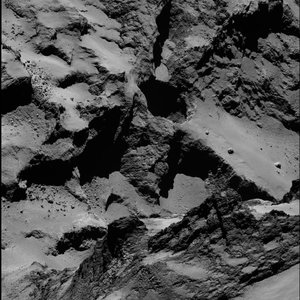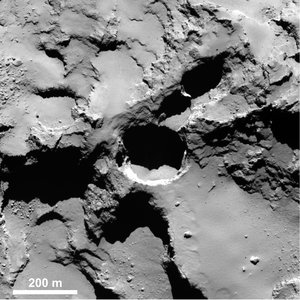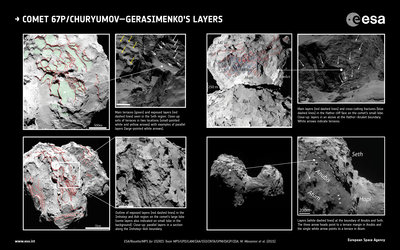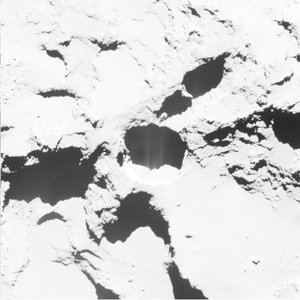Accept all cookies Accept only essential cookies See our Cookie Notice

About ESA
The European Space Agency (ESA) is Europe’s gateway to space. Its mission is to shape the development of Europe’s space capability and ensure that investment in space continues to deliver benefits to the citizens of Europe and the world.
Highlights
ESA - United space in Europe
This is ESA ESA facts Member States & Cooperating States Funding Director General Top management For Member State Delegations European vision European Space Policy ESA & EU Space Councils Responsibility & Sustainability Annual Report Calendar of meetings Corporate newsEstablishments & sites
ESA Headquarters ESA ESTEC ESA ESOC ESA ESRIN ESA EAC ESA ESAC Europe's Spaceport ESA ESEC ESA ECSAT Brussels Office Washington OfficeWorking with ESA
Business with ESA ESA Commercialisation Gateway Law at ESA Careers Cyber resilience at ESA IT at ESA Newsroom Partnerships Merchandising Licence Education Open Space Innovation Platform Integrity and Reporting Administrative Tribunal Health and SafetyMore about ESA
History ESA Historical Archives Exhibitions Publications Art & Culture ESA Merchandise Kids Diversity ESA Brand Centre ESA ChampionsLatest
Space in Member States
Find out more about space activities in our 23 Member States, and understand how ESA works together with their national agencies, institutions and organisations.
Science & Exploration
Exploring our Solar System and unlocking the secrets of the Universe
Go to topicAstronauts
Missions
Juice Euclid Webb Solar Orbiter BepiColombo Gaia ExoMars Cheops Exoplanet missions More missionsActivities
International Space Station Orion service module Gateway Concordia Caves & Pangaea BenefitsLatest
Space Safety
Protecting life and infrastructure on Earth and in orbit
Go to topicAsteroids
Asteroids and Planetary Defence Asteroid danger explained Flyeye telescope: asteroid detection Hera mission: asteroid deflection Near-Earth Object Coordination CentreSpace junk
About space debris Space debris by the numbers Space Environment Report In space refuelling, refurbishing and removingSafety from space
Clean Space ecodesign Zero Debris Technologies Space for Earth Supporting Sustainable DevelopmentLatest
Applications
Using space to benefit citizens and meet future challenges on Earth
Go to topicObserving the Earth
Observing the Earth Future EO Copernicus Meteorology Space for our climate Satellite missionsCommercialisation
ESA Commercialisation Gateway Open Space Innovation Platform Business Incubation ESA Space SolutionsLatest
Enabling & Support
Making space accessible and developing the technologies for the future
Go to topicBuilding missions
Space Engineering and Technology Test centre Laboratories Concurrent Design Facility Preparing for the future Shaping the Future Discovery and Preparation Advanced Concepts TeamSpace transportation
Space Transportation Ariane Vega Space Rider Future space transportation Boost! Europe's Spaceport Launches from Europe's Spaceport from 2012Latest

Active pits on comet
Thank you for liking
You have already liked this page, you can only like it once!
Left: 18 pits have been identified in high-resolution OSIRIS images of Comet 67P/Churyumov–Gerasimenko’s northern hemisphere. The pits are named after the region they are found in, and some of them are active. The context image was taken on 3 August 2014 by the narrow-angle camera from a distance of 285 km; the image resolution is 5.3 m/pixel.
Middle, top: close-up of the active pit named Seth_01 reveals small jets emanating from the interior walls of the pit. The close-up also shows the complex internal structure of the comet. The image is a section of an OSIRIS wide-angle camera image capture on 20 October 2014 from a distance of 7 km from the comet surface. Seth_01 measures about 220 m across.
Right, top: context image showing fine structure in the comet’s jets as seen from a distance of 28 km from the comet’s surface on 22 November 2014. The image was taken with the OSIRIS wide-angle camera and has a resolution is 2.8 m/pixel. In both images the contrast is deliberately stretched in order to see the details of the activity. The active pits in this study contribute a small fraction of the observed activity.
Left, bottom: how the pits may form through sinkhole collapse. 1. Heat causes subsurface ices to sublimate (blue arrows), forming a cavity (2). When the ceiling becomes too weak to support its own weight, it collapses, creating a deep, circular pit (3, red arrow). Newly exposed material in the pit walls sublimates, accounting for the observed activity (3, blue arrows).
Full story: Comet sinkholes generate jets
-
CREDIT
ESA/Rosetta/MPS for OSIRIS Team MPS/UPD/LAM/IAA/SSO/INTA/UPM/DASP/IDA; graphic from J-B Vincent et al (2015) -
LICENCE
ESA Standard Licence

Active regions in Seth

Active pits

Active pit in the Seth region

Layers on the comet’s surface















 Germany
Germany
 Austria
Austria
 Belgium
Belgium
 Denmark
Denmark
 Spain
Spain
 Estonia
Estonia
 Finland
Finland
 France
France
 Greece
Greece
 Hungary
Hungary
 Ireland
Ireland
 Italy
Italy
 Luxembourg
Luxembourg
 Norway
Norway
 The Netherlands
The Netherlands
 Poland
Poland
 Portugal
Portugal
 Czechia
Czechia
 Romania
Romania
 United Kingdom
United Kingdom
 Slovenia
Slovenia
 Sweden
Sweden
 Switzerland
Switzerland
























